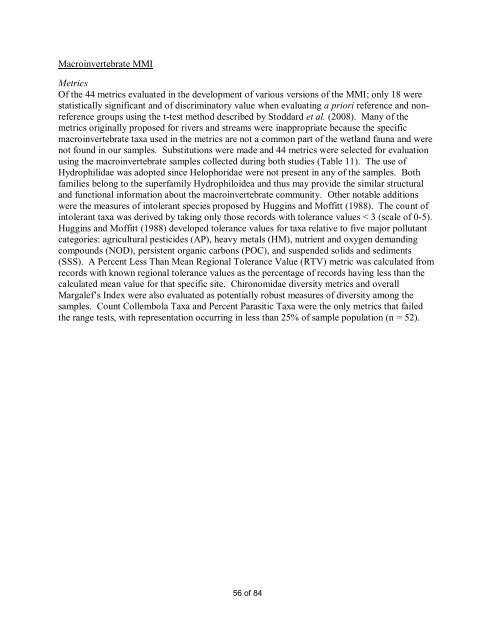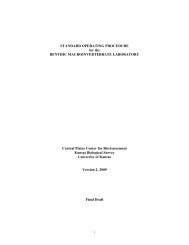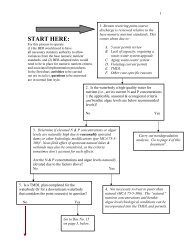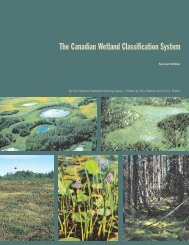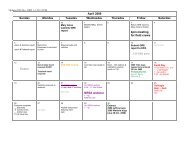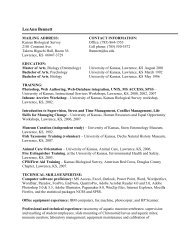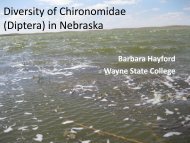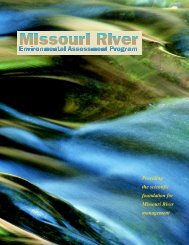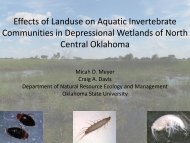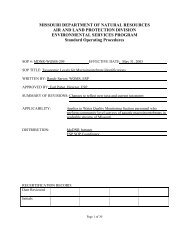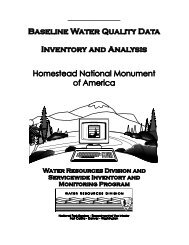Koontz, J., D.G. Huggins, C.C. Freeman, D.S. Baker - Central Plains ...
Koontz, J., D.G. Huggins, C.C. Freeman, D.S. Baker - Central Plains ...
Koontz, J., D.G. Huggins, C.C. Freeman, D.S. Baker - Central Plains ...
Create successful ePaper yourself
Turn your PDF publications into a flip-book with our unique Google optimized e-Paper software.
Macroinvertebrate MMI<br />
Metrics<br />
Of the 44 metrics evaluated in the development of various versions of the MMI; only 18 were<br />
statistically significant and of discriminatory value when evaluating a priori reference and nonreference<br />
groups using the t-test method described by Stoddard et al. (2008). Many of the<br />
metrics originally proposed for rivers and streams were inappropriate because the specific<br />
macroinvertebrate taxa used in the metrics are not a common part of the wetland fauna and were<br />
not found in our samples. Substitutions were made and 44 metrics were selected for evaluation<br />
using the macroinvertebrate samples collected during both studies (Table 11). The use of<br />
Hydrophilidae was adopted since Helophoridae were not present in any of the samples. Both<br />
families belong to the superfamily Hydrophiloidea and thus may provide the similar structural<br />
and functional information about the macroinvertebrate community. Other notable additions<br />
were the measures of intolerant species proposed by <strong>Huggins</strong> and Moffitt (1988). The count of<br />
intolerant taxa was derived by taking only those records with tolerance values < 3 (scale of 0-5).<br />
<strong>Huggins</strong> and Moffitt (1988) developed tolerance values for taxa relative to five major pollutant<br />
categories: agricultural pesticides (AP), heavy metals (HM), nutrient and oxygen demanding<br />
compounds (NOD), persistent organic carbons (POC), and suspended solids and sediments<br />
(SSS). A Percent Less Than Mean Regional Tolerance Value (RTV) metric was calculated from<br />
records with known regional tolerance values as the percentage of records having less than the<br />
calculated mean value for that specific site. Chironomidae diversity metrics and overall<br />
Margalef‟s Index were also evaluated as potentially robust measures of diversity among the<br />
samples. Count Collembola Taxa and Percent Parasitic Taxa were the only metrics that failed<br />
the range tests, with representation occurring in less than 25% of sample population (n = 52).<br />
56 of 84


